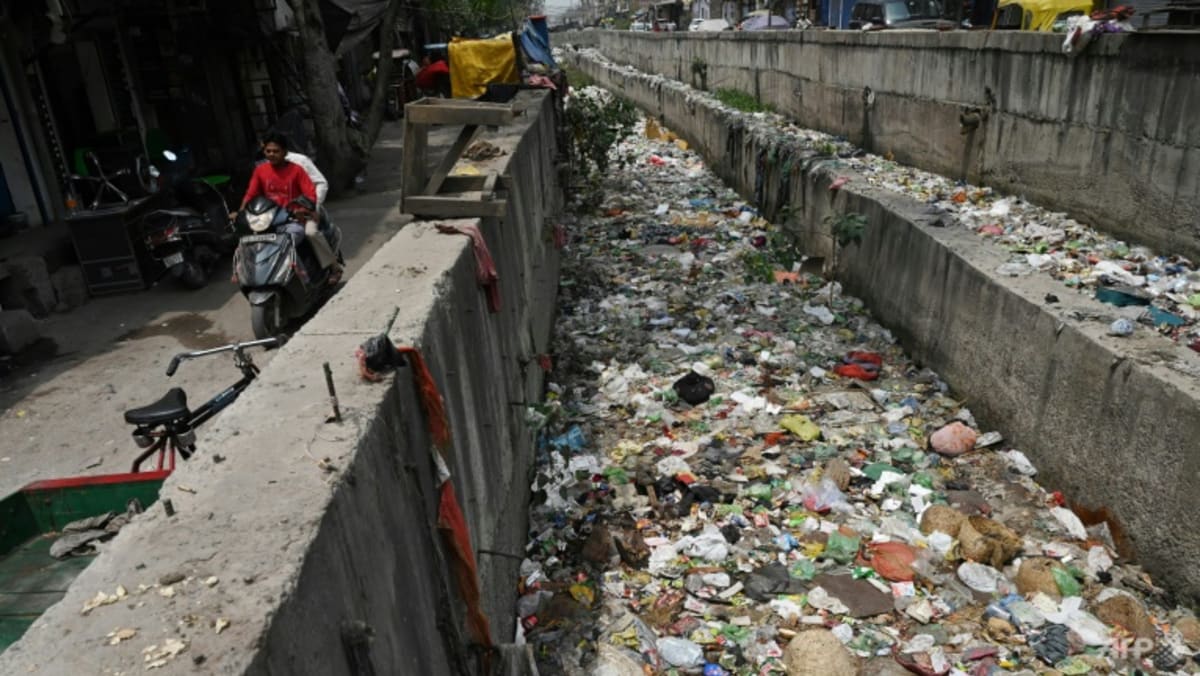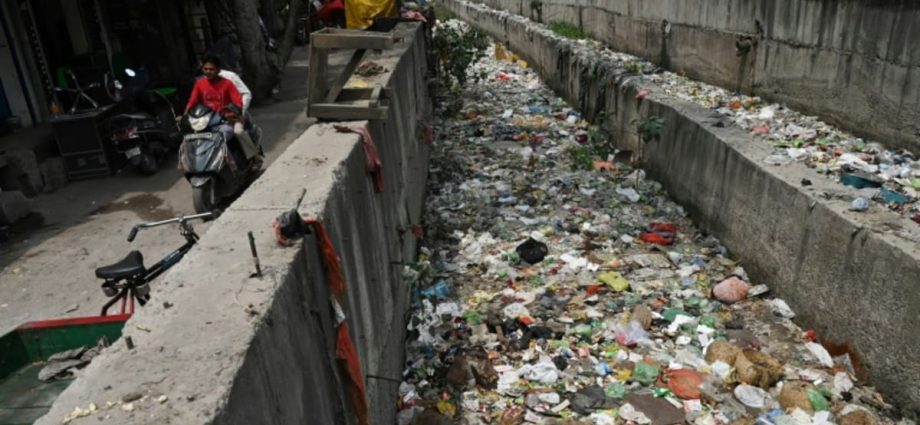
NEW DELHI: Mohammed Azhar holds his baby niece next to a storm drain full of plastic and stinking black sludge, testament to India’s failure to treat nearly two-thirds of its urban sewage.
“We stay inside our homes. We fall sick if we go out,” the 21-year-old told AFP in the Delhi neighbourhood of Seelampur, where open gutters packed with plastic and sickly greyish water flow alongside the narrow lanes.
“It stinks. It attracts mosquitoes. We catch diseases and the kids keep falling sick,” he added. “There is no one to clean the filth.”
India at the end of April was projected to have overtaken China as the world’s most populous country, according to the United Nations, with almost 1.43 billion people.
Its urban population is predicted to explode in the coming decades, with over 270 million more people forecast to live in its cities by 2040.
But of the 72 billion litres of sewage currently generated in urban centres every day, 45 billion litres – enough to fill 18,000 Olympic-sized swimming pools – aren’t treated, according to government figures for 2020-21.
India’s sewerage system does not connect to about two-thirds of its urban homes, according to the National Faecal Sludge and Septage Management Alliance (NFSSM).
Many of the sewage treatment plants in operation don’t comply with standards – including 26 out of Delhi’s 35 facilities, according to media reports.
Coupled with huge volumes of industrial effluent, the sewage is causing disease, polluting India’s waterways, killing wildlife and seeping into groundwater.
ECOLOGICALLY DEAD
Although India has made major progress in reducing child mortality, diarrhoea – caused mostly by contaminated water and food – remains a leading killer.
More than 55,000 children under five died of diarrhoea across India in 2019, according to a study published last year in the scientific journal BMC Public Health.

